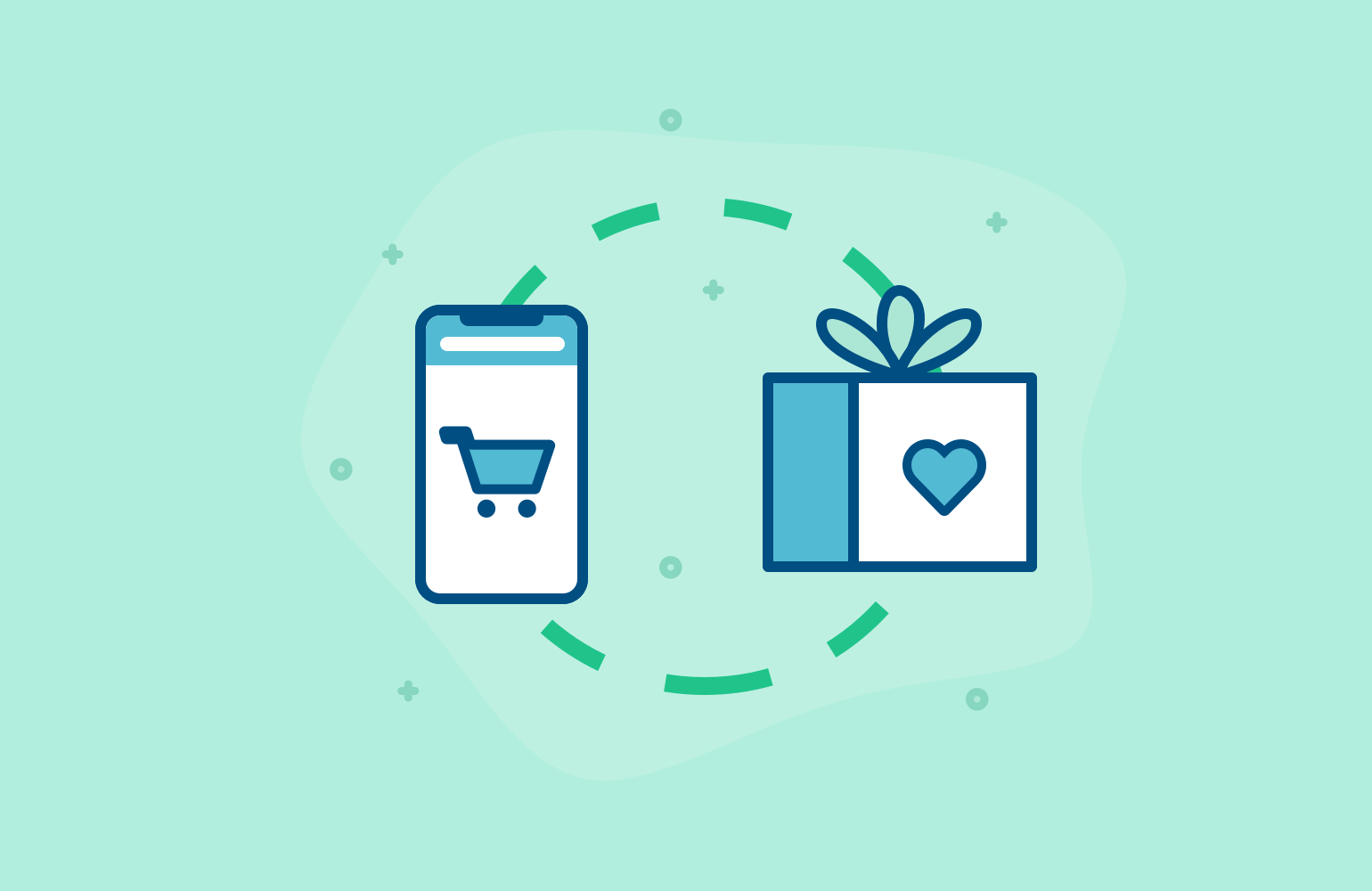Retaining your consumer base is just as important as bringing in new customers – if not more so. Subscriptions are a natural way to keep customers returning, but continuing to build brand loyalty and awareness makes those customers advocates. This can not only increase their lifetime value, but also attract potential customers from their following. So, what can you do to improve both LTV and create advocates from existing customers? Two words: post-purchase marketing.
What is post-purchase marketing?
All consumers go through certain key stages of the buying process – the recognition of a need, searching for information, evaluating alternatives, and then purchasing. However, there is a final phase that many businesses forget about – the post-purchase phase. Post-purchase marketing refers to the communications that take place between a brand and their customer following a sale, with the aim of influencing brand perception and loyalty.
What happens after the sale is arguably the most important phase of all. It’s when your customer decides whether they are satisfied with their purchase. This is the difference between repeat business and positive referrals to friends and family, or losing a customer for good. For subscription-first businesses, this decision is even more critical because a customer needs to decide if they’re going to cancel their subscription or continue to subscribe.
Why Post-purchase Marketing Matters
- Improve your customer retention rates
One purchase alone from a customer isn’t going to help your brand succeed long-term — you need to build up a base of repeat customers. Why? Because repeat customers are, by far, the most valuable to your business. Acquiring new customers can cost you up to five times more than retaining existing customers. Also, existing customers are up to 50% more likely to make a purchase than new customers.
The key to a thriving brand is to turn these new customers into long-term, loyal subscribers. It’s easier said than done, as you need to influence what your customer thinks and feels about their purchase. This is the key to combating cognitive dissonance — better known as Buyer’s Remorse. A survey by creditcards.com revealed almost half of customers suffer from guilt in the post-purchase period, which can spell difficulty for your retention efforts and cause churn. Making the effort to reach out to your customers during this critical time helps to dispel any of those post-purchase woes.
One company that does this extremely well is Hubble Contacts. They send email communications three days in advance of delivery, which is more likely to put their customers in a positive frame of mind in regards to their purchase. It’s small interactions like these which can make all the difference in your retention efforts.
2. Build a relationship with your customer
For eCommerce businesses, building meaningful relationships with your customers can be challenging. Each step of the sales process is mediated by technology rather than people, so the experience can leave your brand feeling a little remote. Successful eCommerce brands build an emotional connection with their audience. The best way to emulate this is by giving yourself an identity that resonates with customers. Build a powerful brand narrative by showing that you care about your customer — especially after they’ve made a purchase.
This email marketing campaign by online clothing store Missguided asks customers to complete a survey about their experience with the brand, in return for $10 off their next order. This doesn’t just increase the likelihood of the customer making another purchase, it also shows that the brand genuinely cares about the customer experience they offer. Most importantly, it shows they want to know how they can improve. Making your post-purchase communications more personal is a sign that you put people before profit.
3. It keeps your brand in your customer’s sights
eCommerce isn’t a gold rush anymore – its an extremely saturated sector. On any given day, there are thousands of brands fighting for our attention. The activewear sector alone is made up of established giants like Nike and Under Armour, as well as a whole host of boutique brands such as ShortPar4 and YogaClub.
It can be very hard for your brand to stand out from all the noise, even to customers that have bought from you before. You need to make the effort to build on the touch points you established during the sales process. If your store goes radio silent after a purchase, it’s all too easy for customers to forget about you. Remind customers of what makes you different from competing brands in your sector. This is where post-purchase marketing makes all the difference.
3 Ways You Can Improve your Post-purchase Marketing Strategy
- Providing unique content
All eCommerce businesses exist to sell – after all, sales keep the lights on. However, what is less talked about is that it’s not just about selling products; it’s about selling ideas. The most successful brands aren’t those who introduce unique goods to the market. Rather, they offer customers a new level of value. Your customers will order from you or subscribe to your offering in part due to your product but, odds are, there’s someone else out there offering something similar. So what makes you different? The answer should be the experience and the value you provide.
For example, cosmetics giant Sephora operates by stocking other makeup labels. A customer could easily buy directly from the brands themselves instead of going through Sephora. However, they would miss out on how-to videos, trend forecasts, and a beauty forum where customers can trade tips between each other. In short, they don’t just sell makeup. They also offer high-quality content and this is what keeps customers coming back again and again.
Here is an example of Sephora’s series of videos on Youtube. The videos are created to educate customers on how to use the products they sell. Though videos can sometimes be expensive to create, they are invaluable for the brand loyalty they foster!
To keep subscribers coming back, you need to show customers why your brand offers the most value. It’s almost certain they will discover competing brands with similar offerings post-sale. How-to blogs and videos, customer case studies and engaging social media content are a fantastic set of tools to raise engagement. This type of engagement will ensure customers keep receiving value from their purchase, long after the actual sale has taken place.
- Investing in a custom packaging experience
Custom packaging is one of the most successful forms of post-purchase marketing. Why? ‘Unboxing’ is a proven strategy to increase brand engagement. In recent years, eCommerce has fallen into an ‘Amazonization’ of online retail – in an era characterized by generic cardboard boxes, putting effort into a curated custom packaging experience will really make an impression on your customers post-sale. Think about every surface as an opportunity to impress and make an impact with your branding.
More than ever before, consumers want to feel valued by the brands they purchase from. According to a study by Wunderman, 79% of consumers say brands must actively demonstrate “they understand and care about me” before they consider purchasing.
To obtain and retain customers, it’s no longer enough to be average. You also need to offer an experience what will boost brand perception.
A clever and attractive unveiling of your product doesn’t just delight your customer, it adds to the perceived value of their purchase. Subscription box company Smockbox, who specializes in baby and children’s products, use this approach heavily in their marketing. It’s a powerful pitch because it shows that, in addition to delivering an eagerly-awaited product haul, they are also delivering a premium experience. In fact, surveys show that 50% of consumers would make additional purchases from brands who use ‘gift-like’ packaging, even if the purchase was for themselves.
As an added benefit, this also enables you to get your customers involved in your post-purchase marketing efforts. This is what makes custom packaging such a unique strategy. It’s not just targeted at the individual customer, but at their entire network. As such a unique visual display, unboxings are very shareable; 40% of consumers would share images of branded packaging on social media because it makes for ‘interesting’ content. By making your post-purchase experience public, you stand to gain many new customers as well as retaining existing ones!
- Loyalty Programs
We previously discussed how loyal, returning customers are much more valuable than new customers. If you provide these customers with a little extra incentive to come back for more, you are far less likely to lose them to competitors. According to the 2016 Bond Loyalty report, 86% of customers are more likely to keep shopping with brands that have a loyalty program.
The problem with loyalty programs is that they usually don’t bring enough value to keep customers engaged, like a ‘get 9 stamps and get your 10th coffee free’ mentality amongst businesses. But incentives need to be much more sophisticated in the age of eCommerce. Programs like the coffee stamp sheet example have a relatively short life. The incentive is lost after the 9th purchase, so it doesn’t give your customers a reason to stick with you long-term. The greater the commitment over time, the greater the reward should be. This is key to building a program which converts new customers into high-value assets for your brand.
One way to do this is by creating a tiered program where customers gain access to bonus rewards and incentives the more they spend. This is also known as ‘gamifying’ your loyalty program because it creates a powerful sales funnel. In order to reach the next level of membership, customers are likely to spend more.
To do this successfully, you need to provide some kind of portal where customers can track their loyalty status. Loyalty tool Smile.io allows businesses to easily set up rewards for their customers for activities such as repeat purchases, social media interaction and product reviews, and also allows customers to keep track of their loyalty status. This provides ongoing incentives for customers to keep purchasing from your brand, rather than from competitors.
Post-purchase marketing is the final step in your communication with customers, so you need to make sure that you leave them with a positive impression of your brand.
Whether it’s providing unique content to accompany a purchase like Sephora, or custom packaging to give your brand a more premium edge, these post-purchase marketing strategies all have one thing in common: they work to associate your brand with quality and value. By going the extra mile, you instantly put yourself head and shoulders above competing brands. This is how you convert customers from one-time buyers to long-term subscribers – if you offer more than just a product, the brand experience can’t be replicated elsewhere.
The ‘little things’ really do matter to your customers. Don’t discount the importance of putting effort into your post-purchase communications – an email follow-up really can make all the difference!




